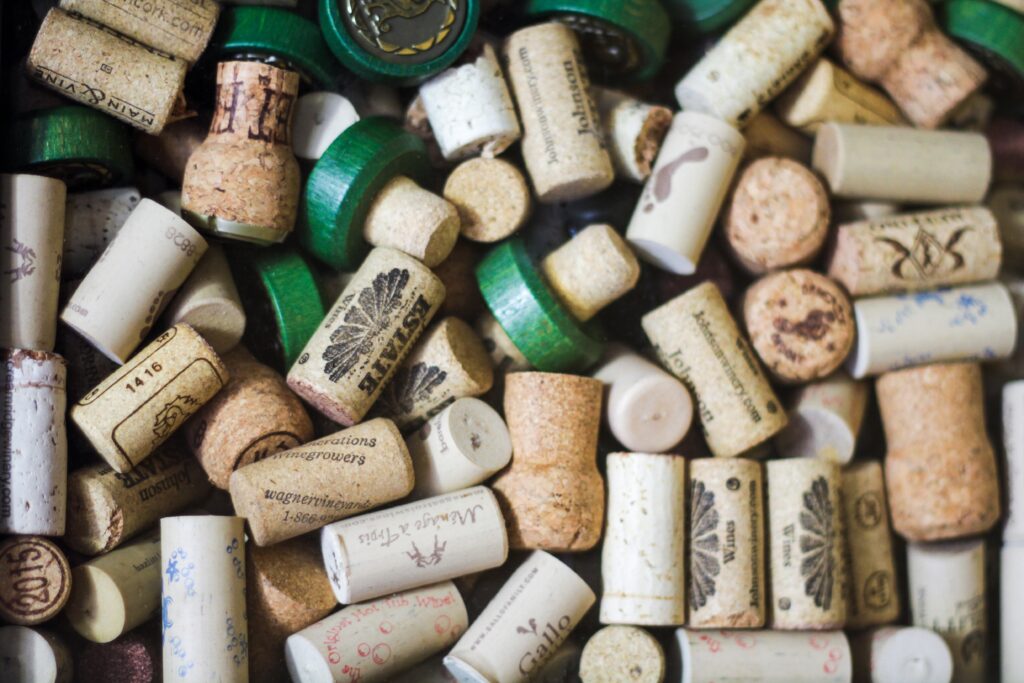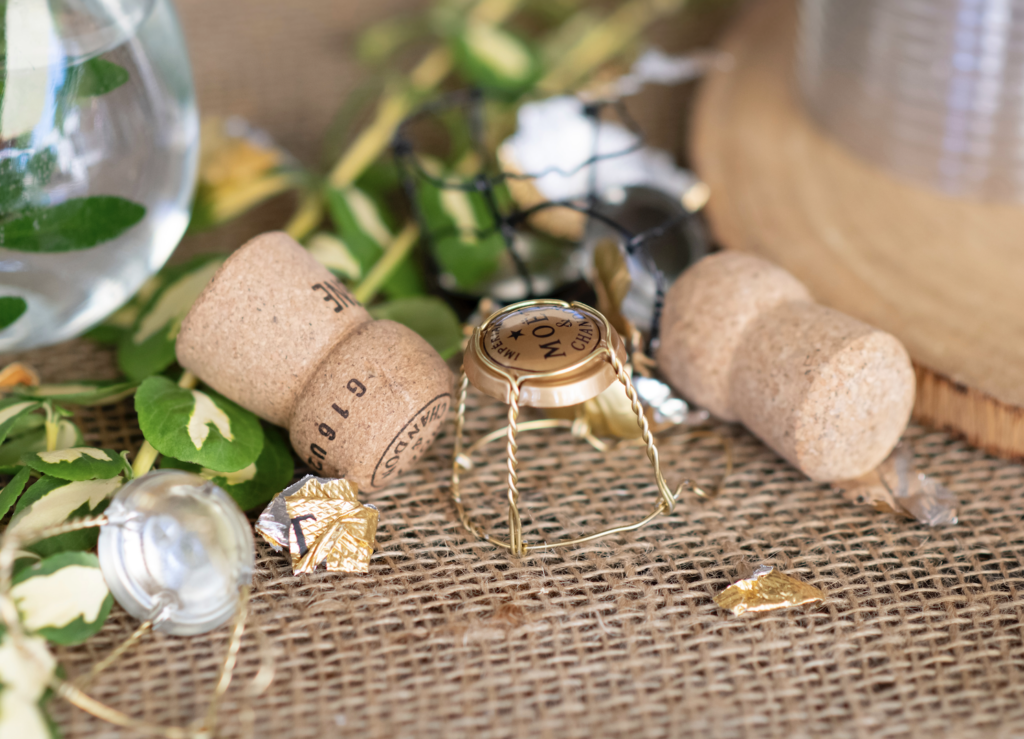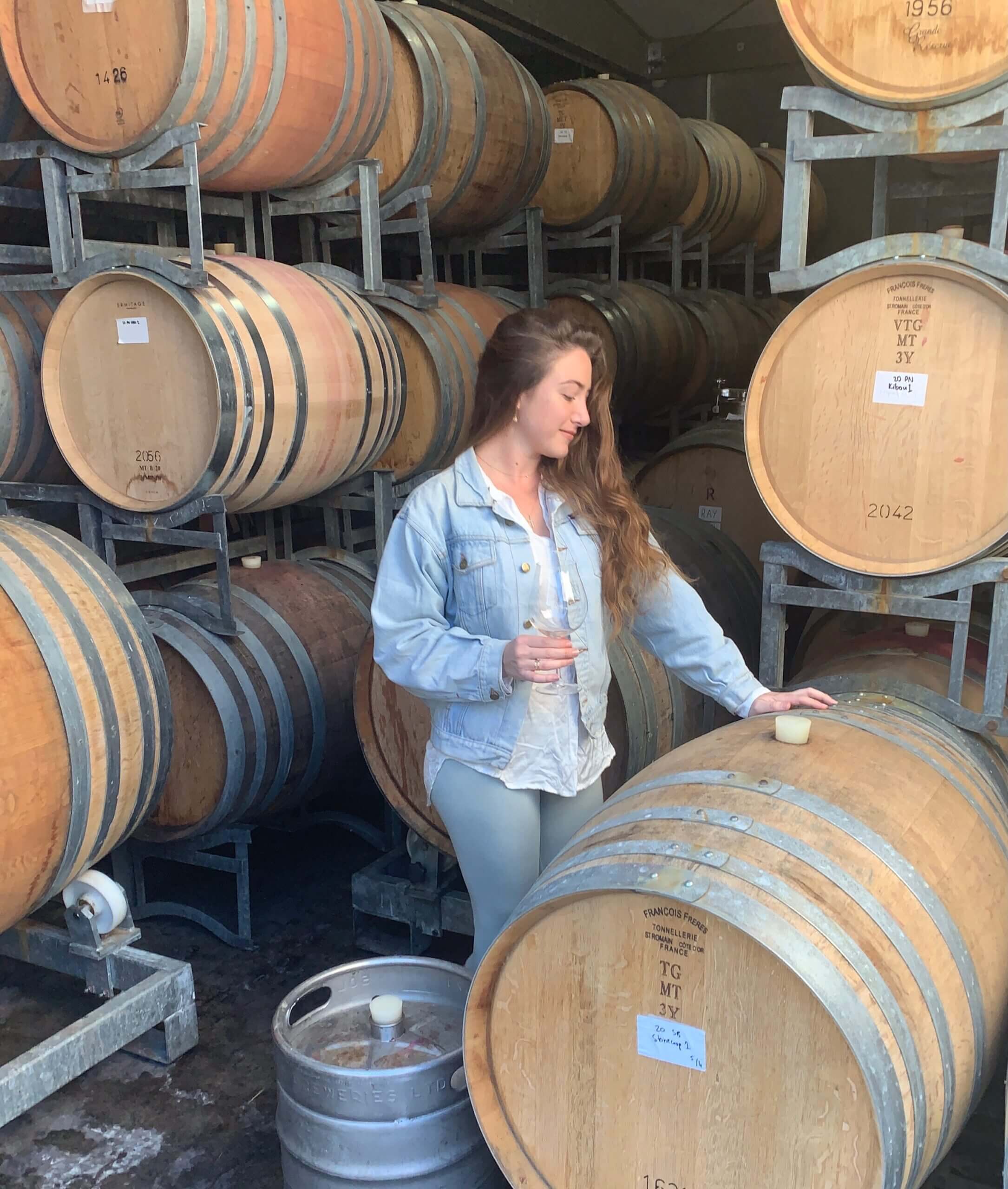How to Close a Wine Bottle Without a Cork
There’s nothing like opening a nice bottle of wine and dreaming of that first sip with a relaxed expression, except suddenly…the cork breaks. All wine lovers have been there (and if not, I’d love to meet that person).

This is an unfortunate situation if wanting to re-use the cork, but not the end of the world. Here are some of the best ways to close your bottle of wine without the original cork.
Note: These tips work if you’ve misplaced the cork, too 🙃
ChoiceWineries.com is reader-supported. When you buy through the links on our site, we may earn an affiliate commission. Visit our disclaimer page for more information.
8 Tips for How to Reseal a Wine Bottle
Whatever you use to close your bottle of wine, the most important thing is to seal it so that minimal oxygen gets in. If not closed properly, this could potentially lead to oxidation. Yuck – not good.
1. Bottle Stoppers
If available or handy, bottle stoppers are definitely the best thing to use when re-sealing your vino. They are extremely affordable and highly effective. Champagne stoppers are especially great when preserving your bubbly for a few more days. Try out this option for a cheap and elegant solution that can be delivered quickly and stored easily within your kitchen.
2. Cover the Opening
Another great way to keep oxygen out is by stretching a piece of plastic wrap or aluminum foil over the top, and securing it with a rubber band around the neck of the bottle. Given, it’s not the prettiest way to close a bottle…but it works like a charm!
3. Invest in a Wine Preserver
See our detailed article on wine preservation systems. Investing in a wine preserver such as Coravin is a good option if you’re known to misplace your corks often (wine tends to have that affect on people). While on the pricier side of the available options, it’s pretty incredible that you can drink a glass of wine without even opening the bottle. This is the recommended solution for serious wine drinkers – drinking expensive wines.
Looking for a more affordable winer preserver? You can use the Vacu Vin Wine Saver to vacuum seal your opened bottle. Simply insert their uniquely designed stopper, then hand pump until you hear a ‘click’ noise. The ‘click’ lets you know you’ve reached the optimal seal.
4. Re-use a Broken Cork
If your cork broke during the opening process, it’s perfectly fine to re-use it. It will be slightly more challenging with the diminished length, but it’s definitely possible. If you’re worried about little crumbs of cork falling into your wine, try wrapping a little wax paper over the side that goes into the bottle. This will also help the cork slide in easier.
5. Use an Alternative Sealed Container
For those of you with Hydroflasks or similar sealed water bottles and thermoses, fill them with your wine to keep it preserved for a few days. Just be sure not to bring it in place of a water bottle on your next hike, or it could be a more challenging hike than you anticipated!
6. Try an Air-Proof Container
Pouring your leftover wine into another air-proof, sealed container such as a jar is also a great way to prevent it from going sour. By doing this, you don’t have to worry about keeping the bottle upright, which may help with storage.
7. Zip Lock Bags Work
Call it crazy, but Zip Lock bags can also do the trick to keep wine fresh. As long as you seal it properly, this unconventional method will keep the oxygen out.
8. The Paper Towel Option
Stuffing the top of the bottle with paper towels is also a temporary fix if you don’t have any of the above. This will not prevent all oxygen from getting in, but it will limit the oxygen exposure while you finish your bottle over the next day or two. With this method, obviously you can’t lay the bottle down, as paper towels are literally made for absorbing liquid.
Not Closing Your Wine Bottle Properly
In a way, wine is a ticking time bomb, especially after it’s been opened. The liquid that has been bottled up for months (or years) at a time is finally being exposed to fresh oxygen.
In most cases, opening your wine and exposing it to oxygen is a good thing. This process allows wine to aerate and open up flavors that have been melding over time. It’s safe to say that most wines 5 years old and younger need about an hour to develop their characteristics once opened. Just remember that once the cork is popped, it is the beginning of the end. ::dramatic gasp::
What does oxidation do to wine?
● Oxidation starts robbing the fresh and fruity flavors that the wine has to offer.
● Open wine has a chance of developing acetic acid bacteria that consumes the alcohol in wine, leaving a vinegar-like smell and taste.
Different Types of Wine Corks

Bark Corks
Yes, there is such a tree as a “cork tree”. This type of tree is called the Quercus Suber, but is commonly known as the Cork Oak tree.
It has a thicker, corky textured bark that is harvested periodically to produce marketworthy corks. It lives for an average of about 200 years. The tree can be harvested about 15 times during it’s lifetime, starting from around 25 years of age. These trees grow in the Mediterranean region of Europe, such as Portugal and Spain – producing more than 80% of the world’s corks! Western Africa is also a hot spot to grow these trees.
Synthetic Corks
These corks are designed to pop like a natural cork, minus the risk of Cork Taint.
According to Wine Enthusiast, Cork Taint is a contaminant in wine caused by musty aroma compounds.
Some complaints have been launched by wine makers and wine consumers about these corks, including trouble sealing the bottles and re-sealing once the cork comes out. Another source of criticism is that many of these corks are made from materials that are not biodegradable.
There are two methods for producing synthetic corks; injection molding and extrusion. While some of these corks are great for preventing Cork Taint, a 2007 study has shown that injection-molded synthetic corks allowed the highest levels of oxygen to seep through, in comparison to both natural corks and screw caps.
Screw Caps
Screw Caps are the ultimate way to keep a wine from getting oxidized. They are much more affordable for wineries as well. So what’s stopping all wineries from making the no-brainer switch? Tradition.
Many Old World winemakers and sommeliers believe that the whole experience of enjoying a bottle of wine should include the process of popping the cork out of the bottle. I mean, can you blame them? After all, there is nothing more satisfying than listening to a cork pop out of a freshly opened bottle.
Champagne Corks
Ever wonder why the top of a Champagne cork is so much bigger than the bottom? This mushroom-shaped cork is not the original form of the cork. In fact, the entire cork starts out as the same size, then is forced into the bottle and it compacts into a smaller size. If you keep a Champagne cork for awhile, it will actually return to it’s full, original size over time.

Before the metal cap and wire cage was placed over the Champagne corks, string was used to keep the cork in place. This worked well until hungry rats were discovered in the cellars. The wire cages that now come over the cork keep rats from chewing on the corks in the cellar, which has caused tragic Champagne explosions in the past.
With so many options on re-sealing your bottle of wine these days, a lost or broken cork is a problem of the past… and that’s something to raise a glass to!
Cheers!

Katarina Jelks is a professionally trained sommelier from Hawaii. She received her Wine & Management Diploma from Le Cordon Bleu in Paris. Her experience working across the wine industry, in locations all around the world (France, Australia, New Zealand, the US & more), has resulted in a global perspective. She loves sharing her passion with others and helping them to chase their thirst for interesting wine and great food.
